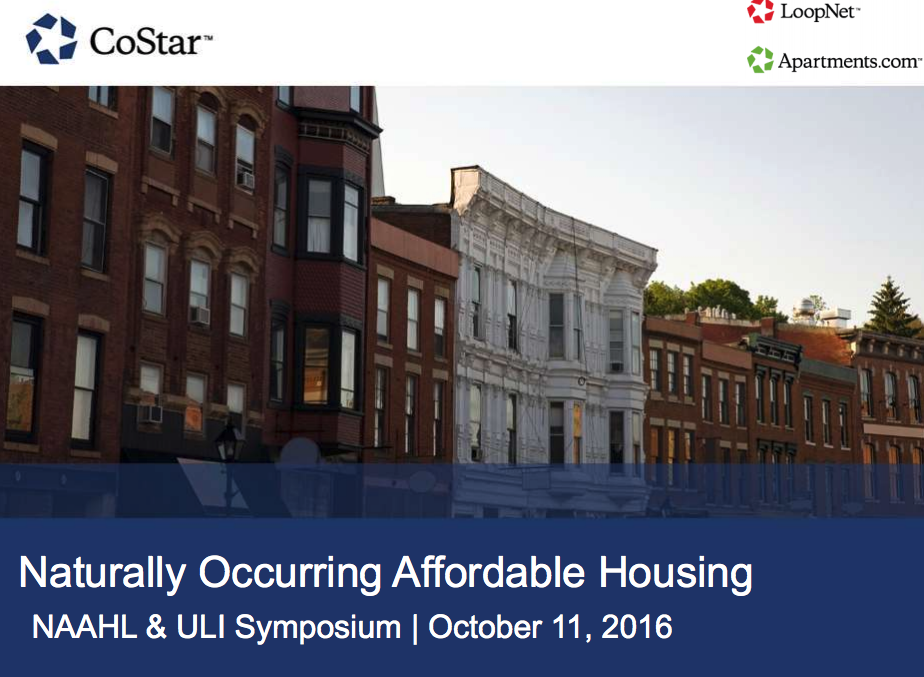Block that metaphor! There’s nothing “natural” about “naturally occurring affordable housing.”
There’s a new term that’s gaining currency in some housing policy circles: “naturally occurring affordable housing.” It even has a catchy acronym: “NOAH.” There’s a recent report from Co-Star (the real estate advisory firm), issued in collaboration with the Urban Land Institute and the National Association of Affordable Housing Lenders, which inventories the number of such naturally occurring units in each of the nation’s large metropolitan areas (they count about 5.6 million).
Even conservative think tank the Manhattan Institute has employed the term, arguing that Mayor Bill de Blasio’s affordable housing program is unnecessary because the city has a reservoir of “naturally occurring affordable housing” that are currently available and require no additional government investment.
The term is a new coinage. A quick search of Google shows no instances of the phrase “naturally occurring affordable housing” appearing prior to 2007. There were fewer than 10 websites using that term in the years up through 2013, and in 2014, “NOAH” began to take off. There were 66 occurrences in 2014, 39 in 2015 and 125 in 2016. And 2017 is on pace to break that with almost 90 instances in the first quarter alone.
The implication is that there are two ways to get affordable housing: to have the public sector subsidize it–usually through some combination of low income housing tax credits on the front-end and Section 8 vouchers for tenants on the back-end. There’s also conventional public housing, owned and built by the public sector. And then, in contrast there’s this second kind of affordable housing: “naturally occurring,” which is privately owned and operated, and just happens to charge rents that are affordable to low and moderate income households.

Block that metaphor!
Basalt, glaciers, arable land and virgin forests are all naturally occurring. So are clouds, insects, and mountains.
While there’s nothing wrong with affordable housing that doesn’t currently rely on direct government subsidies, there’s something profoundly misleading with the term “naturally occurring.”
There’s nothing “natural” about it. Housing markets and the process of investment, decline, and filtering, are all profoundly influenced by a range of policies, from the federal government’s subsidies to housing and highways, to local land use decisions. The process of investment and neighborhood change that results in used housing is “anything but natural” as the University of California’s Karen Chapple and her colleagues put it in a recent report to the California Air Resources Board:
The story of neighborhood decline in the United States is oft-told. While early researchers naturalized processes of neighborhood transition and decline, the drivers of decline are anything but natural and stem from a confluence of factors including: federal policy and investments, changes in the economy, demographic and migration shifts, and discriminatory actions.
(Ironically, that doesn’t stop the authors from also using the term “naturally occurring affordable housing” four times in their report, juxtaposing that with Section 8 vouchers and deed-restricted affordable housing units.)
Naturally occurring conjures up visions of mineral deposits, or mountain ranges or a benign climate. But the existence–or non-existence–of affordable, privately owned housing has everything to do with a wide range of conscious public policy choices that simply don’t belong in the category of natural occurrence. The danger with this term is that it implies that there’s really nothing that we can or should do to promote market housing–it’s naturally occurring, right? It’s either going to be there or it isn’t, so there’s really no point trying to influence it. And if your community doesn’t have enough, well, then there’s really not much you can do about it.
What that misses, of course, is that public policies, especially local zoning requirements, building codes, parking requirements, development fees and the like have everything to do with whether the private market provides housing that is affordable. When we ban apartments from wide swaths of most communities, when we outlaw affordable micro-units in desirable neighborhoods, when we subject development to a wide range of discretionary and arbitrary approval processes, and when we impose enormous costs in the form of parking requirements, we’re making sure that the private market doesn’t produce housing that is affordable.
And as we’ve noted, the whole process of filtering, where, as housing ages it becomes more and more affordable, is contingent on allowing an ample supply of new housing, even when those new units are themselves more expensive than low and moderate income households can afford. The only reason that some communities have plenty of what gets called “naturally affordable” housing is that they made it relatively easy to build new housing and that in turn led housing to filter downward and become more affordable.
In contrast, many communities–we’re looking at you, San Francisco–made it really difficult to build any new housing, with the result that a lot of older units which would have filtered down market as they aged, became the only feasible housing alternative, and consequently their prices got bid up so that they didn’t become more affordable as they got older.
So by all means, let’s talk about the role of markets and privately owned housing in addressing affordability; but let’s not use a term that intrinsically isolates this from the policy arena.


